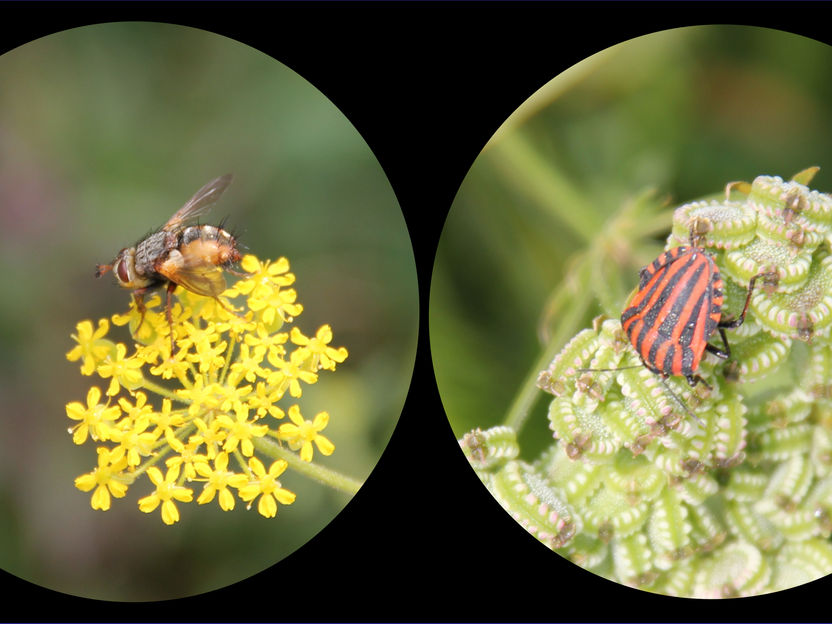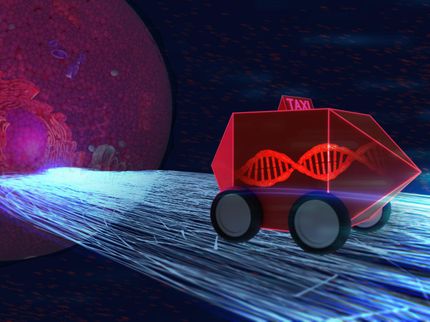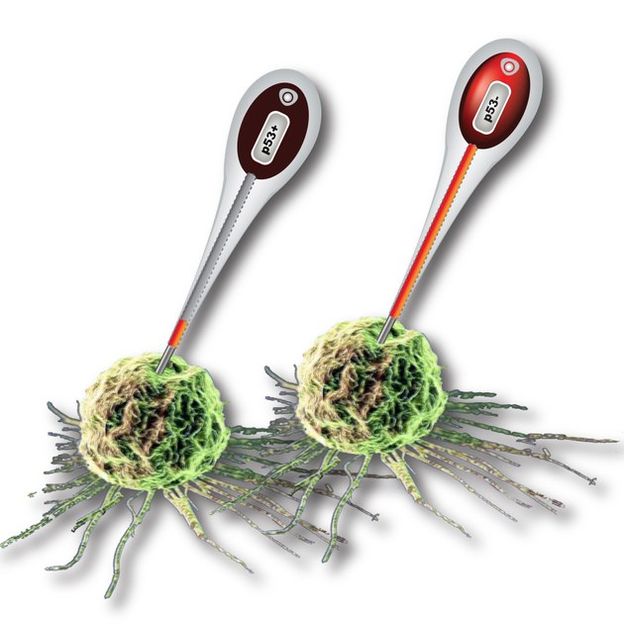Hundreds of novel viruses discovered in insects
New viruses which cause diseases often come from animals. Well-known examples of this are the Zika virus transmitted by mosquitoes, bird flu viruses, as well as the MERS virus which is associated with camels. In order to identify new viral diseases quickly and prevent possible epidemics, DZIF scientists at Charité – Universitätsmedizin Berlin are targeting their search at viruses in animals. In a current study, they have now discovered hundreds of novel viruses in insects.

Insects can harbour viruses.
Sofia Paraskevopoulou
“Every new virus we find could be a cause of illnesses that was previously unknown, both in humans and in livestock,” explains Professor Christian Drosten, Director of the Institute of Virology on Campus Charité Mitte. The scientist is a specialist for virus discovery and diagnostics at the German Center for Infection Research (DZIF). For example, his team has defined the international standard approach for diagnosing MERS. He is currently focusing on rare virus diagnoses using new sequencing techniques. “The more viruses we identify and add to our database, the easier it is for us to recognise the cause of new and unusual illnesses,” says Drosten.
Current study
In the current study within the framework of the DZIF working group on “Virus detection and preparedness”, the research team has made use of the largest international transcriptome database on insects, a kind of calalogue of gene acitivity, and investigated the data it contains with regard to virus genomes. Whilst scientists have previously concentrated on mosquitos and other blood-feeding insects, this study includes all groups of insects. Viruses with negative strand RNA genomes have been systematically investigated. This group of RNA viruses includes important pathogenic viruses; these cause Ebola and measles, as well as rabies and lung infections.
Search databases for new viruses
In a total of 1243 insect species, the researchers discovered viruses that can be classified in at least 20 new genera. “This is probably the largest sample of animals ever screened for new viruses,” says Drosten. The working group has already added the new insect viruses to its search databases. With the help of these data, it will now be possible to investigate cases of rare and unusual illnesses in humans. This includes patients who display all the symptoms of a viral infection, however no virus can be identified in the case in question. “In such cases, we use high-throughput sequencing methods to search for all the viruses present in the patient,” explains Drosten. “If the patient has a virus, we will find it, provided it is in our database or has similarities with a virus in our database.” The chances of the search being successful will increase thanks to the addition of the new insect viruses.
Within the framework of the DZIF project “Virus detection and preparedness”, scientists at Charité focus on anticipating and detecting future viral threats.
Original publication
Other news from the department science

Get the life science industry in your inbox
By submitting this form you agree that LUMITOS AG will send you the newsletter(s) selected above by email. Your data will not be passed on to third parties. Your data will be stored and processed in accordance with our data protection regulations. LUMITOS may contact you by email for the purpose of advertising or market and opinion surveys. You can revoke your consent at any time without giving reasons to LUMITOS AG, Ernst-Augustin-Str. 2, 12489 Berlin, Germany or by e-mail at revoke@lumitos.com with effect for the future. In addition, each email contains a link to unsubscribe from the corresponding newsletter.




















































